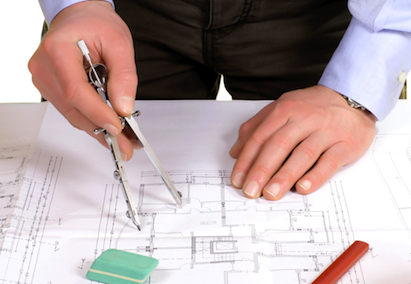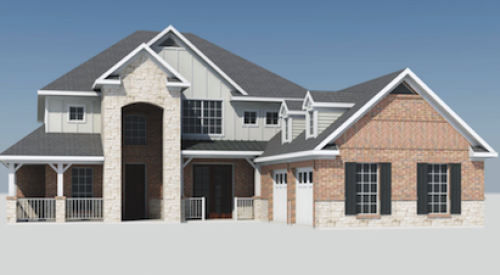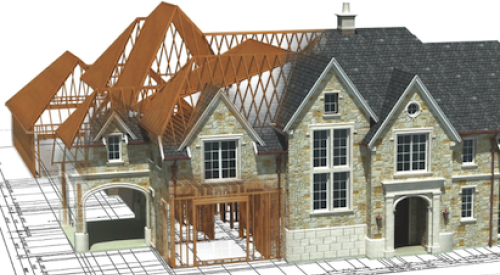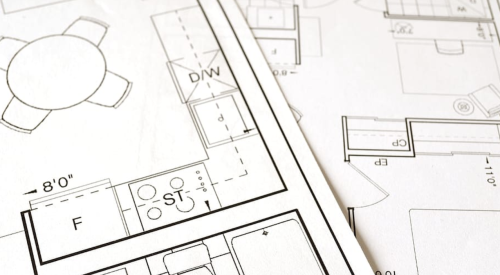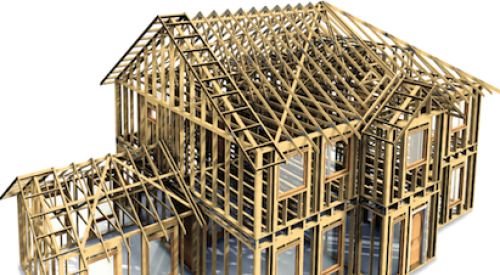Last year PB received an official complaint letter from a high level staffer at the AIA, basically saying that I was being unfair to Architects. I confessed to being guilty of describing the reality of continuing problems in the field that result from Architects taking a rather limited view of their job responsibilities.
If it’s any consolation, I’m equally unkind to Engineers, for the same reasons. During my research for the series of 3 articles I wrote for Professional Builder on BIM (Building Information Modeling) for the October, November and December issues, I talked to a lot of really bright, committed people in the trenches who passionate about making the process of homebuilding work better. Here is a sample from my upcoming December article, courtesy of Brad Blissit, President of Integrated Structural Concepts in Phoenix. Brad’s firm not only designs using BIM, but also builds foundations and erects frame packages. Brad observes:
"Architects don’t draw for construction purposes. Most architects still use the 4” and 6” wall width convention. Why 4”? Let’s do the math; a 2x4 is actually 1-1/2” thick x 3-1/2”wide (plus drywall on each side.) Typical residential drywall is 1/2” so, 3 1/2”+ 1” = 4-1/2” if you’re going to include the drywall. But they draw it as 4”. These dimensions are used at least 10 different times through the design and construction process. So when the living room wall is shown 12’ from the outside wall...well it’s not really 12’ is it? So the structural engineer, the truss manufacturer, the framer, the plumber and the concrete form-setter all have to re-interpret where the wall is supposed to go.”
The results are errors, rework, wasted time and field “work-arounds” and once you understand the costs of doing it this way, it is completely unacceptable. Why do cabinet companies make a costly measuring trip to nearly every house before installation? Now you know. Even if the framer builds it exactly to plan, the result in this case could be 5 inches off, either way. Brad goes on to say:
"95% of all the plans we see have the wrong elevation dimensions. Architects don’t understand or don’t want to be bothered with the fact that a 9’ stud (the most common used today in our markets) is 104-5/8” in a trimmed height dimension. So again, when we roll out a set of plans on a building, we have to do all the mental gymnastics to figure out what the architect intended. Do we really have to cut each stud to his off-standard dimensions? Can we use precut studs? What’s the impact on doors, windows, and drywall? This is just one of those “It’s the way we’ve always done it” things. We think it comes from the old days of hand drafting and it was hard to see that ½” mark on the old scales. Or maybe the fractions didn’t look as clean on the drawings?"
Whatever the source, you can see the problem. How do we get Architects, along with builders, suppliers and engineers, to change 100 years of tradition? In Architects’ defense, I can recount many of them describing how they want to produce the level of detailed working drawings that just a 2D CAD drawing needs to work effectively in the field, but so often builders will not cough up the additional cost even when they pay a large multiple of that in field mistakes and rework.
I guess my problem is that I have seen enough truly great Architects and Engineers who actually “get it.” They understand the full implications of not getting the details right and do everything in their power to get it right the first time and my hat’s off to them. Meanwhile, I won’t apologize for continuing to point out the pain and costs associated with those who leave a mess for others to figure out.
